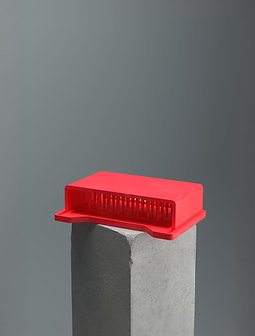1 day ago2 min read
3 days ago4 min read
5 days ago5 min read

Updated: May 5

Understanding how cells move is fundamental to biology. From wound healing to embryonic development and cancer metastasis, cell migration is a key player. Scientists often study this process in vitro using a technique called the scratch assay (or wound healing assay). Imagine a crowded room (a cell monolayer) where you suddenly clear a path (the 'scratch'). Researchers then watch how quickly the cells move back into the empty space to understand their migratory behavior.
Simple, right? Well, not always.
The scratch assay is incredibly useful, but analyzing the results can be tricky. Real-world biology isn't always neat and tidy. Often, the initial scratch isn't a perfect line, leaving irregular cell-free areas. There are tools like CellCut to aid with more uniform scratches, however as these new tools are yet to be more widespread in the filed, most researchers still use traditional methods like pipet-tips to perform scratch assays. As a result the leading edge of the migrating cell sheet can become uneven or crooked as cells move.
Traditional quantification methods – ways to put a number on how fast cells are moving – often struggle with this messiness. Methods looking at the overall area closure or average width reduction can lose precision or even fail to detect subtle but important differences in migration rates between different cell groups. This is a major roadblock for researchers trying to evaluate potential drugs or understand the complex dance of collective cell migration.
Enter a powerful technique detailed in the Journal of The Royal Society Interface: Monolayer Edge Velocimetry. This innovative quantification method tackles the messiness head-on.
Instead of just looking at the shrinking gap, Monolayer Edge Velocimetry focuses directly on the action at the front line. It precisely measures the horizontal component of the cell monolayer velocity right across that crucial leading edge. Think of it as accurately clocking the speed of the very cells leading the charge into the open space, even when the frontline is uneven.
The researchers rigorously tested this new method using both computer simulations (in silico data generated with an agent-based model) and real in vitro lab experiments. The results were clear:
Superior Accuracy: Monolayer Edge Velocimetry showed significantly lower statistical errors compared to standard methods, especially when dealing with imperfect scratch assays.
Enhanced Sensitivity: Crucially, the new method successfully detected differences in migration rates between different cell lines that older methods completely missed.
This isn't just a technical improvement; it's about enabling better science. By providing a more robust and sensitive way to analyze scratch assay data, Monolayer Edge Velocimetry allows researchers to:
Gain more accurate insights from experiments that were previously difficult or impossible to analyze.
Better evaluate the effects of drugs or genetic modifications on cell migration.
Advance our understanding of complex biological processes like wound healing, development, and cancer invasion.
This approach promises to unlock deeper insights from a cornerstone technique in cell biology, pushing the boundaries of what we can learn about the fascinating world of cell migration.
Want to dive deeper? Check out the original research paper: In vitro cell migration quantification method for scratch assays
Q1: What is a scratch assay?
A: A scratch assay, also known as a wound healing assay, is an in vitro technique used to study cell migration. In this method, a "scratch" or gap is created in a confluent monolayer of cells, and researchers observe how cells move to fill the gap over time.
📚 Reference: Liang, C.-C., Park, A. Y., & Guan, J.-L. (2007). In vitro scratch assay: a convenient and inexpensive method for analysis of cell migration in vitro. Nature Protocols, 2(2), 329–333.🔗 https://doi.org/10.1038/nprot.2007.30
Q2: What is the scratch assay used to study?
A: The scratch assay is primarily used to study cell migration and wound healing. It is widely applied in research on cancer metastasis, tissue regeneration, and the effects of drugs or genetic modifications on cell motility.
📚 Reference: Kramer, N., Walzl, A., Unger, C., et al. (2013). In vitro cell migration and invasion assays. Journal of Visualized Experiments, (77), e50333.🔗 https://doi.org/10.1016/j.mrrev.2012.08.001
Q3: What is the objective of the scratch assay?
A: The main objective is to evaluate the ability of cells to migrate into a wound area under controlled conditions. It helps determine how various factors—such as growth factors, drugs, or genetic changes—influence cellular migration behavior.
📚 Reference: Rodriguez, L. G., Wu, X., & Guan, J. L. (2005). Wound-healing assay. Methods in Molecular Biology, 294, 23–29.🔗 https://doi.org/10.1385/1-59259-860-9:023
Q4: What is the scratch assay model?
A: The scratch assay model is a simple, reproducible experimental setup that simulates wound healing by mimicking a cell-free zone in a 2D monolayer. The model assumes that wound closure occurs mainly through cell migration, not proliferation, especially when conducted over short time frames or with mitotic inhibitors.
📚 Reference: Liang, C.-C., Park, A. Y., & Guan, J.-L. (2007). Same as above.🔗 https://doi.org/10.1038/nprot.2007.30

